MC 2018 Corrections
| Number | Name | Topic | Skills |
|---|---|---|---|
| Q14 | Comparing loop algorithms | 3.9 | 1.D |
| Q39 | Internet open standards and protocols | 4.1 | 5.A |
| Q43 | Runtime of algorithm for online retailer | 3.17 | 1.D |
| Q50 | Searching list target | 3.10 | 4.B |
| Q54 | Abstraction with procedures Square and Cube | 3.13 | 3.C |
| Q58 | Defining Internet enabled crowdsourcing | 5.4 | 1.C |
| Q65 | Correcting errors in procedure Multiply | 1.4 | 4.C |
Q14
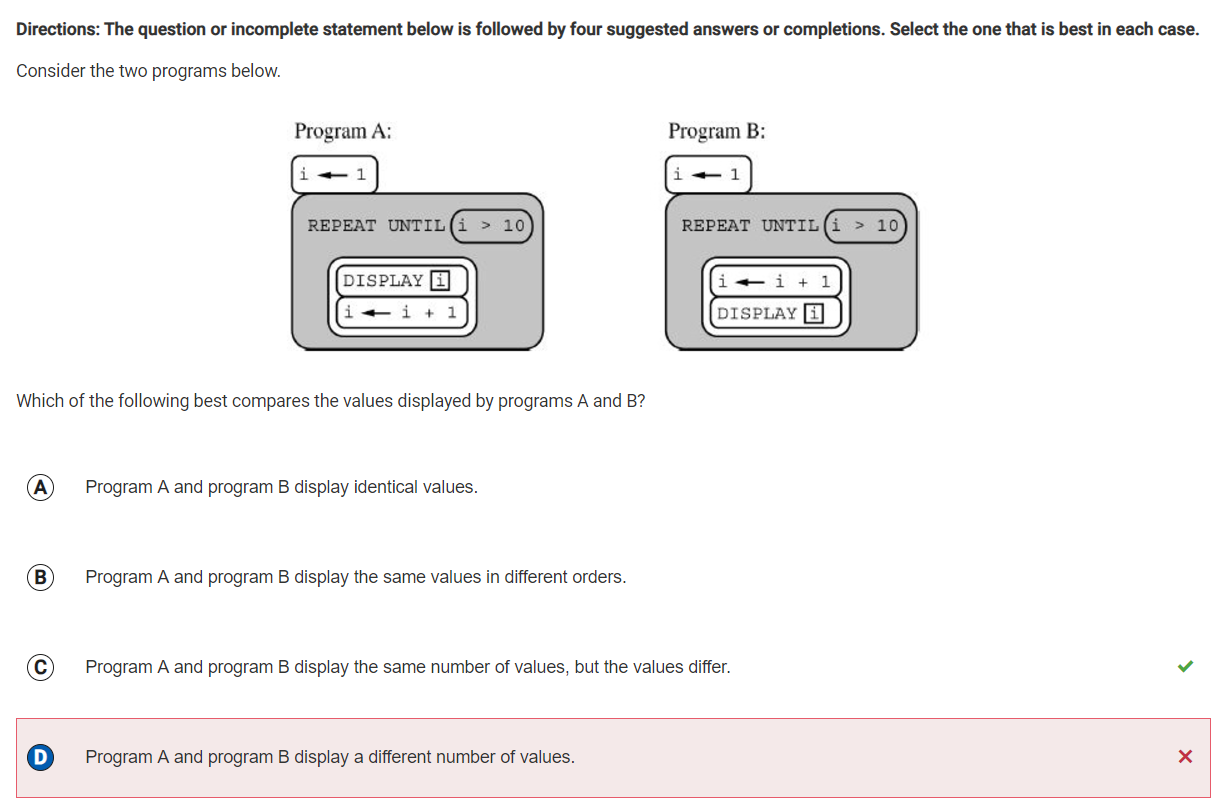
Why Option C is Correct: Both programs display the same number of values. Each displays 10 values because the loop condition (i > 10) stops both loops after the same number of iterations. However, the values displayed are different.
- Program A displays 1 through 10.
- Program B displays 2 through 11.
Why the Other Options Are Incorrect: Option A: “Program A and program B display identical values.”
- This is incorrect because the starting and ending values differ. Program A starts at 1 and ends at 10, whereas Program B starts at 2 and ends at 11.
Option B: “Program A and program B display the same values in different orders.”
- This is incorrect because both programs display values in the same order (ascending), but the actual values differ.
Option D: “Program A and program B display a different number of values.”
- This is incorrect because both programs display exactly 10 values.
Q39
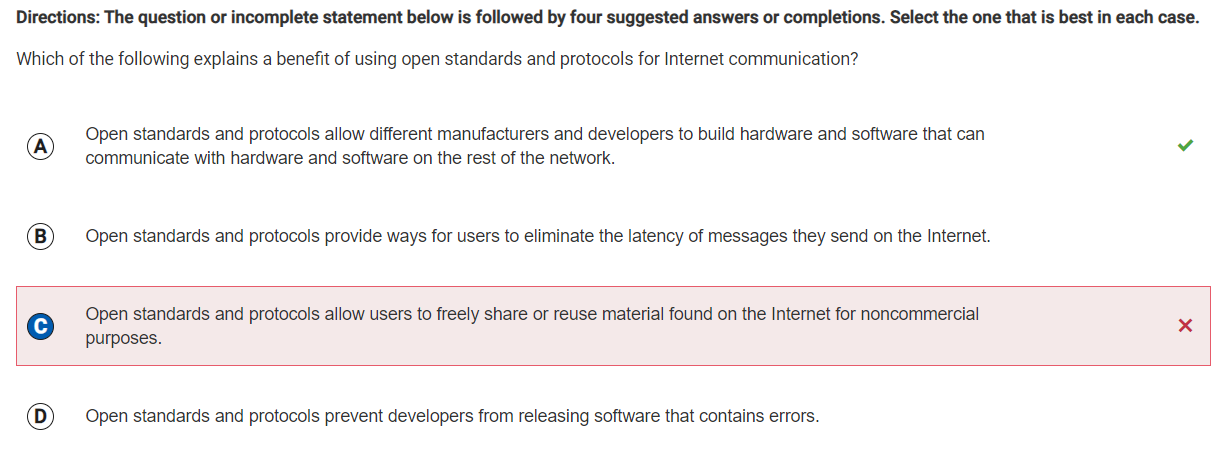
Why Option A is Correct: Open standards and protocols benefit Internet communication because they:
- Allow different manufacturers and developers to work together across the Internet.
- Create a more unified and functional system.
Why the Other Options Are Incorrect: Option B: “Open standards and protocols provide ways for users to eliminate the latency of messages they send on the Internet.”
- This is incorrect because open standards do not directly reduce or eliminate latency.
Option C: “Open standards and protocols allow users to freely share or reuse material found on the Internet for noncommercial purposes.”
- This is incorrect because open standards do not control the licensing or sharing of content on the Internet.
Option D: “Open standards and protocols prevent developers from releasing software that contains errors.”
- This is incorrect because open standards do not enforce error prevention in software development.
Q43
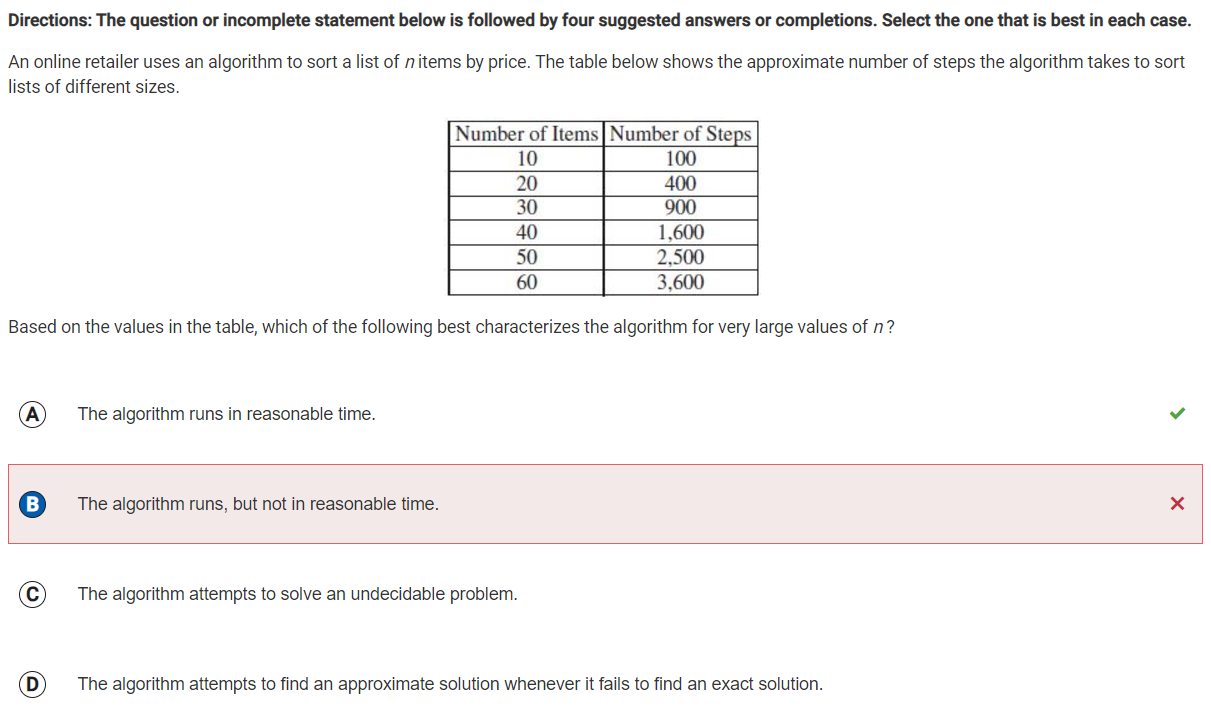
Why Option A is Correct:
- The algorithm’s steps grow in the form of a polynomial with the number of items (
n²growth rate).
Why the Other Options Are Incorrect:
Option B:
- Incorrect because the growth rate is quadratic (
n²), not exponential, and thus remains efficient for practical input sizes.
Option C:
- Incorrect because the problem is decidable since it’s sorting.
Option D:
- Incorrect because the algorithm is exact, not approximate.
Q50

Why Option B is Correct:
- Performs a linear search, meaning it compares each element of the list with the intended target value
Why the Other Options Are Incorrect:
Option A:
- Doesn’t implement a binary search
Option C:
- Doesn’t implement a binary search and doesn’t require the list to be sorted
Option D:
- Doesn’t require the list to be sorted
Q54
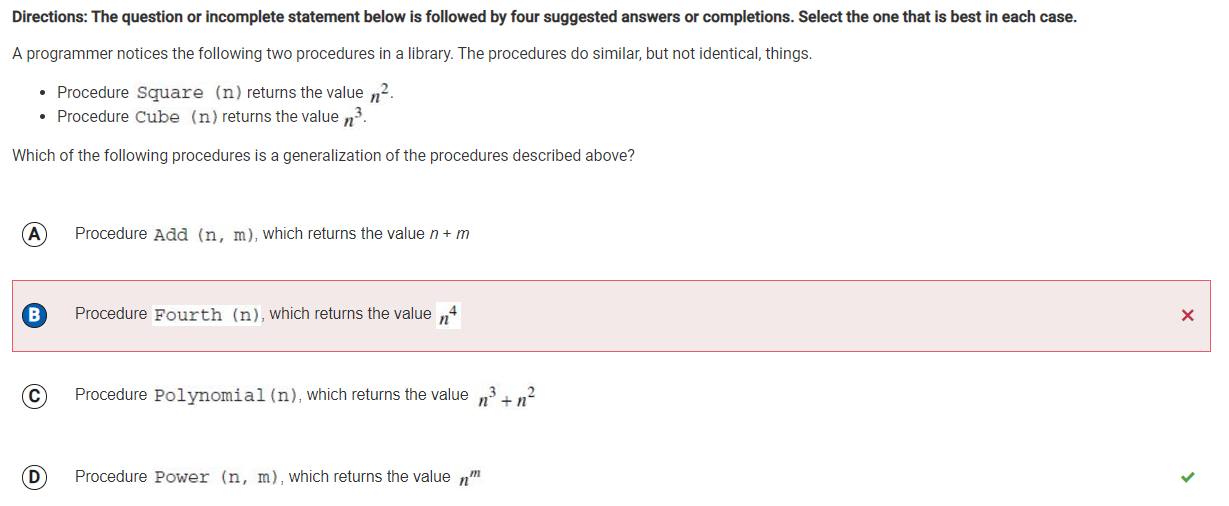
Why Option D is Correct:
- The generalization is correct of power n to the m, because the same effect can be seen in square and cube
Why the Other Options Are Incorrect:
Option A:
- “Add” doesn’t generalize Square and Cube procedures
Option B:
- Fourth procedure doesn’t generalize the calculation of the ability to calculate any power of n
Option C:
- Although the Polynomial procedure properly adds Square and Cube, doesn’t generalize any power of n
Q58

Why Option A is Correct:
- The internet does indeed provide tools, information, and professional knowledge to participants of crowdsourcing, and does provide a better reach to those with geographic barriers. However, the internet may not always solve problems with reasonable time.
Q65
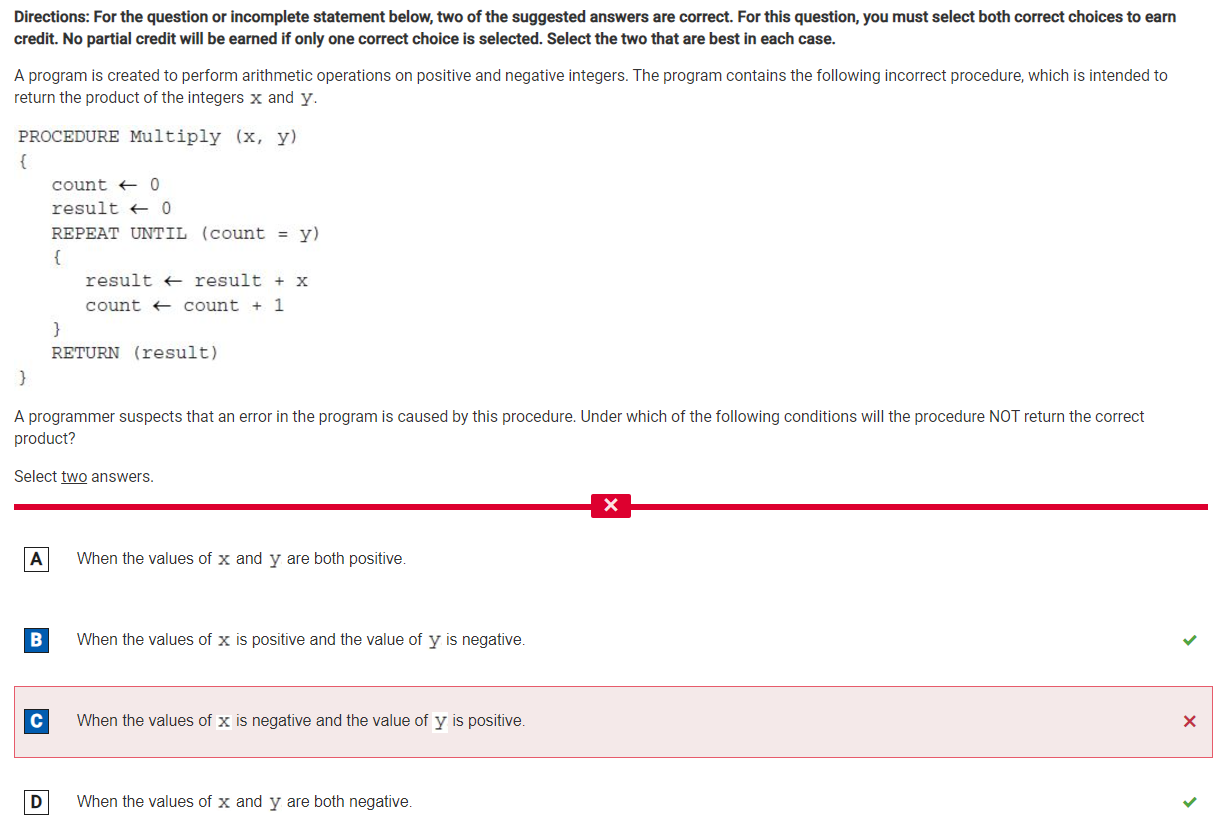
Why Option B and D are Correct:
- If Y is negative, then the condition will never be met of count = y because count = 0 is reset every time.
Why the Other Options Are Incorrect:
- If both x and y are positive, the procedure will proceed correctly by adding x y times to itself.
Overall, this multiple choice quiz took me an hour and 27 minutes, and I feel that it was a successful first attempt! I will make my best effort to continue improving my score and also understanding the content better.
One category of skills I need to improve on is skill 1, which is, “Design and evaluate computational solutions for a purpose.” One category of topics I need to improve on is topic 3, which is, “Algorithms & Programming Fundamentals”